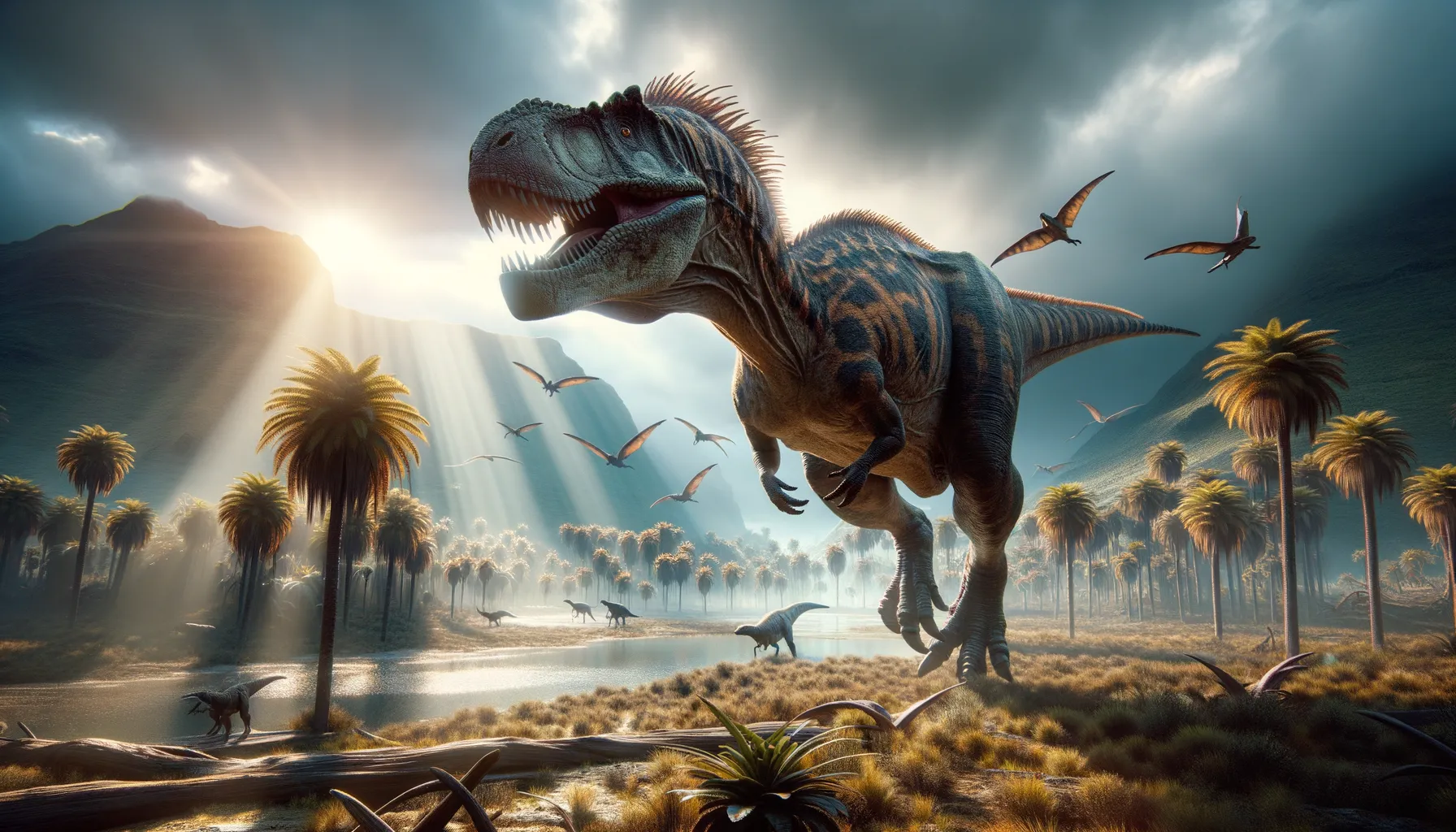
Mapusaurus
Ancient predator of Patagonia's plains.
Period
Cretaceous
Length
Measured up to 10 meters long.
Height
Stood around 3 meters tall at the hips.
Weight
Weighed approximately 3 tons.
Mapusaurus was a giant carnivorous dinosaur that roamed South America during the Late Cretaceous period. Known for being one of the largest theropods, it shared similarities with its close relative, Giganotosaurus. Mapusaurus fossils were first uncovered in Argentina, offering significant insights into the predatory dynamics of its time. The discovery of multiple individuals together suggests potential pack behavior, which might have played a role in hunting large prey.
Diet
Mapusaurus was a carnivore, primarily hunting large herbivorous dinosaurs like Argentinosaurus. Its size and strength allowed it to tackle substantial prey, using its sharp teeth for a quick and fatal grip.
Hunting
It possibly hunted in groups, using coordinated attacks to bring down massive prey. This social hunting strategy would have been advantageous for overcoming larger herbivores, ensuring ample food for a group.
Environmental challenges
Mapusaurus faced climate changes that affected its habitat and food supply. Competition with other large predators would have also been a challenge. Despite these, its adaptability allowed it to thrive in diverse environments. Navigating a dynamic landscape required Mapusaurus to contend with shifting resources and survival threats.
Speed
Relatively fast for a large predator.
Lifespan
Estimated to live several decades.
First discovery
Discovered in Patagonia, Argentina, in 1997.
Fun Facts
- Mapusaurus was a massive carnivorous dinosaur that lived about 97 million years ago in what is now Argentina.
- The name Mapusaurus means 'Earth Lizard,' and it comes from the Mapuche word 'Mapu,' which means 'the land.'
- Mapusaurus was a close relative of the famous Giganotosaurus, and some scientists believe it could have hunted in groups!
- This giant predator measured around 33 feet (10 meters) in length, making it one of the largest theropods known.
- Mapusaurus is thought to have preyed on large herbivores like Argentinosaurus, but it likely scavenged too.
- The first fossils of Mapusaurus were discovered in 1997, but it wasn't fully described as a new species until 2006.
Growth and Development
Mapusaurus likely grew rapidly during its juvenile years to avoid predation from other carnivores. Its growth rates might have slowed as it reached adulthood, focusing energy on honing survival skills. This growth pattern was crucial for gaining a competitive edge in reaching the top of the food chain. Fossil evidence suggests distinct growth stages, reflecting its adaptive strategy.
Habitat
Its habitat predominantly consisted of open plains with scattered forests, providing ample space to hunt. Seasonal variations in vegetation likely influenced its movement patterns. The region's diverse ecosystems offered multiple resources, from fresh water sources to shelter. These habitats, abundant with prey, supported its survival.
Interaction with other species
Mapusaurus likely competed with other large predators like Giganotosaurus for food. Its potential pack behavior might have reduced direct conflicts by tackling different niches. Despite its predatory dominance, it would have been cautious around other formidable carnivores. Scavengers likely followed its hunts to capitalize on leftovers.
Natural lifespan
Mapusaurus could have lived up to 40 years in the wild.
Reproduction
Reproduction involved laying eggs in nests, possibly communal for better protection. Hatchlings were vulnerable, relying on rapid growth for survival. Parental care, if any, remains a matter of speculation due to lack of direct evidence. Reproductive success was crucial for maintaining population stability.
Social behaviour
Evidence suggests that Mapusaurus might have exhibited some social behavior, such as hunting in packs. This collective behavior could have enhanced hunting efficiency. Social interactions may have also played a role in mating and territorial disputes. Cooperation could have been key in managing resources.
Fossil locations
Fossils of Mapusaurus have mainly been found in the Huincul Formation of Patagonia, Argentina. The site revealed a bonebed containing remains of several individuals. These discoveries have provided substantial evidence for assessing its social structure. Such aggregations are rare and provide essential insights into its life.
